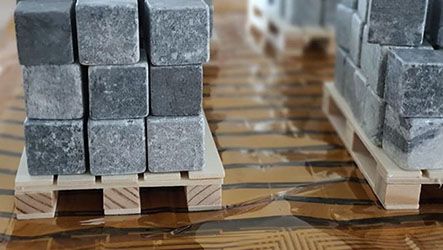
LOGISTICS
The discrepancy between digital and physical availability of goods is a well-known problem in the logistics industry. Our flexible printed sensors can help to solve this and many other problems in Logistics.
Printed Sensors for Logistics
Maintaining an overview is difficult when it comes to the logistics industry which includes a wide variety of areas such as industrial logistics, logistics in online trade, or container, railway and flight logistics. Yet, they all have one thing in common: You want to know where what is located and in what condition - preferably at any point in time. As simple as this may sound, often this is not even a given fact in warehouses with slow turnover rates. For various reasons, there is a discrepancy between digital and physical availability of goods. This in turn leads to follow-up costs and at worst, to a loss of face.
Printed sensor technology provides a possibility to deliver solutions for the aforementioned problems and can thus contribute to the digitization and optimization of your processes. For this purpose, various sensor functions such as pressure and weight measurement, measurement of pressure distribution, temperature, humidity, presence detection, level measurement and object detection can be combined and tailored exactly to the specific requirements of your individual challenge.
Why Printed Sensors Provide the Leading Edge
A major benefit is the form factor of the sensor solutions. With total thicknesses in the range of 100 µm, completely new, and above alle, two-dimensional measurements are possible and this with minimal weight - a decisive advantage particularly in the logistics sector. Furthermore, the production using roll-to-roll processes enables a very cost effective production and finally, in the broadest sense, a significant advantage constitutes the flexibility. On the one hand, this relates to the physical appearance of the sensor solutions, as the sensors can be printed on different types of foil and can also be used on curved surfaces, for example. On the other hand, flexibility also refers to the design. Thus, the layout, i.e. the shape of the sensors, the number, size and arrangement of possible pixels as well as the sensitivity and the measuring range, can be adjusted in a highly variable way - depending on whether a ballpoint pen or a pallet is to be registered. Important to mention is also the possibility to combine different types of sensors on one and the same foil. This enables us to develop the optimal solution for each individual challenge.
What Applications In Logistics Are Conceivable?

1. Printed Sensors for Warehouse
Whether in high-rack warehouses for pallets or rapidly changing interim storage facilities, pressure or weight changes can be registered at all times by integrating pressure-sensitive sensor foils. Thus, a permanent inventory can be realized. The system then provides real-time inventory information which can be used, for example, to detect incorrect entries in the system, to avoid incorrect order picking or to optimize warehouse logistics in general.
2. Printed Sensors for Freight Forwarder
Similar to the application in warehouses, pressure sensors can also provide feedback on the filling level of a container, a tank, a truck or a postal van on the road. But there are even more advantages. Particularly, when transporting expensive goods, such as cars, printed sensors can provide information about possible damage caused during transport ("damage detection"). Another crucial application is "smart packaging". Since our sensors are manufactured using a modified label printing press, "intelligence" can be integrated directly into packaging in order to track delivery conditions such as temperature or humidity in real time. Printing batteries also provides the necessary autonomy, whereas printed antennas can be used to supply energy. Even connecting the sensor electronics to mobile phone networks for wireless data transmission is no problem.
3. Printed Sensors for Industry 4.0 and Smart Factory
Printed sensors become highly interesting by connecting them to IoT systems. There are enough clouds, however, without data the best cloud is useless. Due to the low manufacturing costs and high degree of individualization, printed sensors are an ideal enabler of Industry 4.0. The obstacle which has to be overcome is the transfer of data from the readout electronics to the corresponding IoT systems. In order to accomplish this, InnovationLab has specifically trained employees who connect the cloud of your choice with our customized sensor solution. Whether it concerns digital twins of the inventory, monitoring temperature and humidity or checking a specific gas composition - printed sensor technology makes a significant contribution to the automation and optimization of production.
